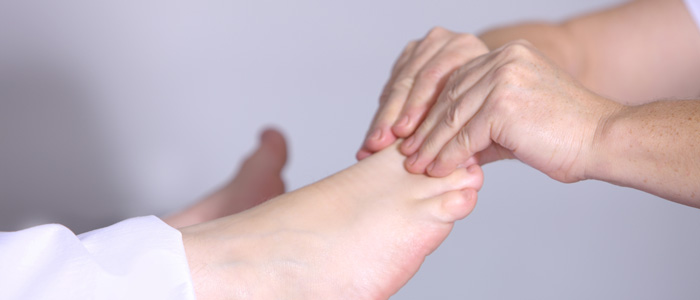
Reflexology is both old and new; massaging the feet, hands and body to stimulate or relax internal organs and muscles has been a basic technique of medical practice since ancient times. It is these same techniques that have been developed into the modern scientific method now known as reflexology. What joins the old and new is the long-established principle that there are energy zones that run throughout the body; therefore making it possible to access all parts of the body via the feet.
Reflexology, as it is now known originated with the zone therapy of Dr. William Fitzgerald of Connecticut, originally an Ear, Nose and Throat specialist. He argued that parts of the body corresponded to other parts and proved the fact by applying pressure to one area which anaesthetized another corresponding area. This was sufficient to enable him to perform minor operations on the nose and throat without using local analgesics.In 1917 Dr Fitzgerald published his first book, entitled ‘Zone Therapy, or Relieving Pain at Home’. In this he spoke of the body divided into 10 longitudinal zones; showing links between each of the internal organs and particular zones.
During the 1930s, the theory of reflexology was further refined into its modern form by physiotherapist Eunice D Ingham, who had been using the zone therapy on her patients. She investigated the possibility that since the zones ran throughout the body and could be accessed anywhere may be there was one area that would be more effective. She discovered the feet were more sensitive and eventually mapped the entire body onto the feet and discovered that by applying alternating pressure on the various points it had therapeutic effects beyond that previously experienced.
[ Back to top ]Since ancient times healers have employed methods to strengthen and balance the energy flow within the body. Reflexology works on a system of energy zones which flow longitudinally throughout the body, starting in the head and ending in the feet and hands.
In working the reflex areas corresponding to other areas of the body on the feet it is possible to detect imbalances in the energy zones and though pressure be able to help correct the previously reduced or blocked flow of energy. When the reflex areas are worked there is an increase in blood circulation; which is beneficial since this circulation supplies various parts of the body nutritents and a way of removing waste products from body tissues to organs to be excreted.
Reflexology induces deep relaxation allowing the nervous system to calm down and de-activate the ‘fight or flight’ syndrome reducing the bodies’ adrenaline levels which allows healing to begin.
In some areas of the feet it may be possible to feel the presence of crystal deposits which represents an imbalance in the corresponding part of the body. By massaging these crystals it is possible to cause them to breakdown and be eliminated from the body. In opening up the energy path-ways the self healing properties of the body are stimulated and allows neurological and circulatory systems to do their work. Energy starts to flow correctly again, the mind, body and spirit and brought back into balance and harmony.
[ Back to top ]Reflexology uses foot massage to effect physiological changes which then may have psycho-emotional benefits. The stimulation applied acts to clear nervous and tissue congestion, removing accumulated toxins from them and encouraging the body’s own innate healing ability.
Furthermore Reflexology:-
To begin you will be asked questions about your diet, lifestyle, health and medical history; which will be recorded. For the treatment you lie with bare feet on a treatment couch. The therapist will examine your feet, paying particular attention to their texture, colour and temperature, as the condition of your feet and the condition of your body are strongly related. A session begins with your feet being cleansed with wipes and an all-over foot massage to relax you and ends with one too.
Massage on the specific points on the feet can re-dress imbalances, improve circulation, induce deep relaxation, cleanse the body of toxins, and boost the immune system. The treatment lasts approximately 1 hour with both feet being massaged twice. Moisturising cream is often used in the massage (however this is optional) every area of the foot is worked systematically with the thumb and finger. Sometimes, pressing a specific reflex causes pain or tenderness, which indicates a blockage or imbalance in a particular organ or body part. To the therapist, problem areas are often indicated by taut or spongy reflexes or grainy crystalline deposits under the skin. The pain goes away as soon as the pressure is taken away.
After the session you may feel the characteristic light sensation in your feet, often accompanied by warmth, and will probably feel very relaxed and tired. However, some people do experience a sudden burst of energy; although this energy should be utilized by the body to balance itself, it is still important to relax, rather than using this new-found energy to do the housework or gardening!
Furthermore after a treatment you may experience:
It is important to remember that these are short term reactions as your body attempts to clear excess toxins and congestion to regain balance within the whole system.
[ Back to top ]